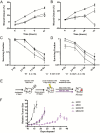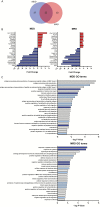Modulation of dietary methionine intake elicits potent, yet distinct, anticancer effects on primary versus metastatic tumors
- PMID: 29939201
- PMCID: PMC6148987
- DOI: 10.1093/carcin/bgy085
Modulation of dietary methionine intake elicits potent, yet distinct, anticancer effects on primary versus metastatic tumors
Abstract
Methionine dependency describes the characteristic rapid in vitro death of most tumor cells in the absence of methionine. Combining chemotherapy with dietary methionine deprivation [methionine-deficient diet (MDD)] at tolerable levels has vast potential in tumor treatment; however, it is limited by MDD-induced toxicity during extended deprivation. Recent advances in imaging and irradiation delivery have created the field of stereotactic body radiotherapy (SBRT), where fewer large-dose fractions delivered in less time result in increased local-tumor control, which could be maximally synergistic with an MDD short course. Identification of the lowest effective methionine dietary intake not associated with toxicity will further enhance the cancer therapy potential. In this study, we investigated the effects of MDD and methionine-restricted diet (MRD) in primary and metastatic melanoma models in combination with radiotherapy (RT). In vitro, MDD dose-dependently sensitized mouse and human melanoma cell lines to RT. In vivo in mice, MDD substantially potentiated the effects of RT by a significant delay in tumor growth, in comparison with administering MDD or RT alone. The antitumor effects of an MDD/RT approach were due to effects on one-carbon metabolism, resulting in impaired methionine biotransformation via downregulation of Mat2a, which encodes methionine adenosyltransferase 2A. Furthermore, and probably most importantly, MDD and MRD substantially diminished metastatic potential; the antitumor MRD effects were not associated with toxicity to normal tissue. Our findings suggest that modulation of methionine intake holds substantial promise for use with short-course SBRT for cancer treatment.
Figures





Comment in
-
Reply to Flugge: the anti-metastatic potential of methionine restriction in melanoma.Carcinogenesis. 2020 May 14;41(3):390-391. doi: 10.1093/carcin/bgz099. Carcinogenesis. 2020. PMID: 31140558 Free PMC article. No abstract available.
-
The anti-metastatic potential of methionine restriction in melanoma: a reply to Miousse et al. (2018).Carcinogenesis. 2020 May 14;41(3):392-393. doi: 10.1093/carcin/bgz097. Carcinogenesis. 2020. PMID: 31188424 No abstract available.
References
-
- Cavuoto P., et al. (2012) A review of methionine dependency and the role of methionine restriction in cancer growth control and life-span extension. Cancer Treat. Rev., 38, 726–736. - PubMed
-
- Hoffman R.M. (2015) Development of recombinant methioninase to target the general cancer-specific metabolic defect of methionine dependence: a 40-year odyssey. Expert Opin. Biol. Ther., 15, 21–31. - PubMed
-
- Agrawal V., et al. (2012) Targeting methionine auxotrophy in cancer: discovery & exploration. Expert Opin. Biol. Ther., 12, 53–61. - PubMed
-
- Pavillard V., et al. (2006) Methionine dependence of tumours: a biochemical strategy for optimizing paclitaxel chemosensitivity in vitro. Biochem. Pharmacol., 71, 772–778. - PubMed
-
- Guénin S., et al. (2009) Combined methionine deprivation and chloroethylnitrosourea have time-dependent therapeutic synergy on melanoma tumors that NMR spectroscopy-based metabolomics explains by methionine and phospholipid metabolism reprogramming. Nutr. Cancer, 61, 518–529. - PubMed
MeSH terms
Substances
LinkOut - more resources
Full Text Sources
Other Literature Sources
Medical
Miscellaneous

